What happens when you mix ashes with fat? We’ve got the scoop on that.
Get your soap making kit together, friends. We’re gonna scrub this one until it’s spotless.
Lye
When you have a hardwood campfire, you’ll notice that the ashes seem a little extra greasy. When you mix these ashes into a pot of boiling water and slowly reduce it down, you’ll leech the lye from the ashes and be able to use it for soap. Yes, that’s all lye is; a remnant of ashes and water, made into what we’re going to call a “gravy” in this article.
No, don’t look at me like that. Don’t eat it. Don’t even think about it. It’d be the grossest thing you’ve ever tried.
So, what happens when you mix this lye base with animal lard? You get soap. It’s the most basic form of the product that you spend thousands on every single year.
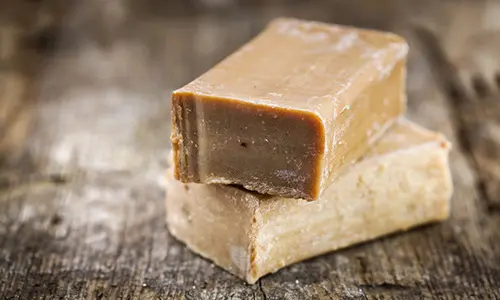
We do have to pause here and note that many people are sensitive to lye. I’m one of them and make an alternative form of this for myself and others in the house that are sensitive to lye.
Uncertain if you are? Find a commercial lye soap and use just a little on the back of your hand. If you don’t have a reaction, try other spots on your body. There’s a good chance that you won’t be reactive.
For those that are, get an allergy test to see if you’re allergic to certain trees since the oils can leech into the lye when you’re making it and that can be the problem rather than the actual lye itself.
If you aren’t sensitive to the lye, you can probably make soap pretty cheap.
Related: What Happens If You Ash Your Garden
That’s All Soap Is?
Well, some soaps are a little more complex these days. A lot of them use glycerin as a base rather than lye due to the problems mentioned up above. However, lye soap is solid and it’s been the pinnacle of soaps for a lot of years with many in older generations demanding lye soap and saying that it cleans better than anything else. It can also be used on clothing, in household cleaning, and so many other ways.
After all, few people separated what their soaps did for a long time. It’s only been in the past 150-200 years that we’ve separated clothing soap from body soap and so on and so forth. Soap was just soap for a very long time.
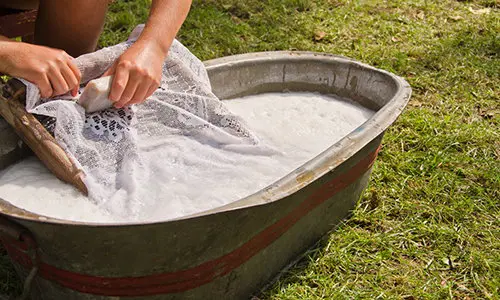
Ready to try your hand at it? Let’s get going!
⇒ The ‘Superweed’ That Saved Large Communities During The Great Depression (Video)
Let’s Make Some Simple Soap
First thing’s first. Make lye water. Gather 10 or so cups of hardwood ashes. Tie your ashes up in a cheesecloth and put them in a straining container with a large bucket underneath, preferably a metal one. Pour 1 gallon of boiling water through these ashes slowly but surely. You should be left with brown lye water in the bucket beneath the straining container.

Take this container in and put it on your stove. Boil this down until you have right around 1/2 to 3/8ths of a cup of lye water. It may be more like lye honey or lye gravy by the time it is that thick. Remember to be extremely careful with lye and wear both eye protection and thick gloves; pure lye will scorch your skin. Not sure if it’s ready? Put an egg in it. If it floats, it’s finished and ready to go.
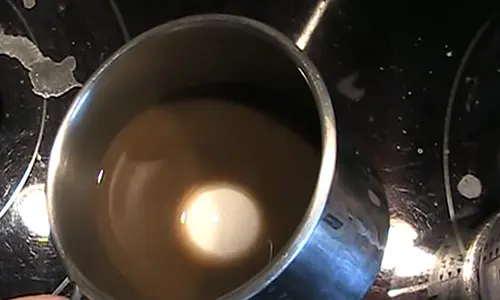
Add this to either two cups of rendered beef tallow or rendered pork tallow, heating until the fat is liquid.
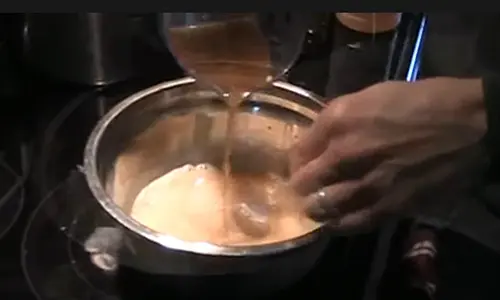
Slowly mix this concoction at a temperature of around 120 degrees until it becomes creamy white. This will take as little as 30 minutes or as long as 3 hours, depending on several nutritional factors within the tallow. Most soap comes together (turns creamy white) within an hour and a half. Stir now and again, always letting the soap rest for at least 15-20 minutes in between stirring sessions.
If you desire to add a scent to your soap, go ahead and add it at this point.
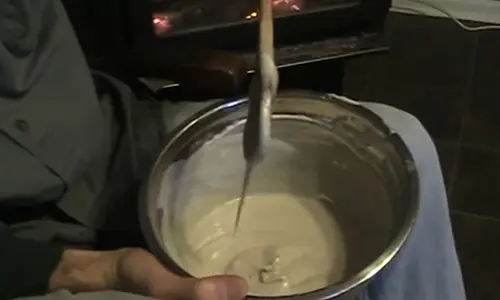
Once the soap has turned into a pudding-like consistency, you’re ready to move on to the next step! Pour your soap into your molds and allow your soap to rest for a week. This means no touching it, no testing it. Nothing. Place it in a comfortable room to let the fat completely solidify. We recommend resting at about 70-75 F degrees.
After the soap has rested, turn it out and allow it to air dry for another 4-6 weeks. Soap is ready when it feels like Dial freshly out of the package or perhaps slightly harder. This soap can be used to clean your floors, your windows, your car, yourself, your dishes; anything whatsoever. This is the soap that your great-grandmothers used to clean everything.
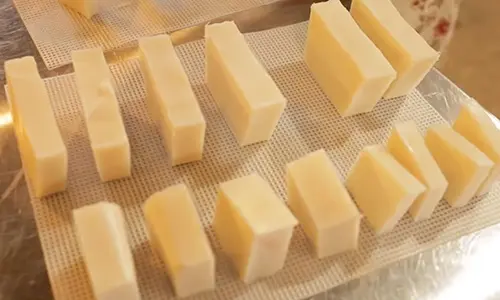
This soap has an average shelf-life of 2-4 years. If it smells rancid, it is. However, the lye should protect the animal fat within for years and years to come. If you want to store it for a long period of time, wrap it in wax paper or plastic to keep the moisture from getting in and causing spoilage.
Related: If You Have This Plant in Your Backyard, You Will Never Run Out of Soap
Troubleshooting
If your soap is dripping liquid, you need to add more fat next time around. Pour off the fluid. No big deal. Your soap should still set and not be an issue long-term.
If your soap will not come together and create that pudding-like consistency, start a second batch of lye and add just a little bit more to it. You’ll likely see the chemical reaction take place almost immediately. The remainder of wood pulp in the lye is what helps bind the fat together and makes it form these wonderful bars that we associate with soap.
You say your soap isn’t soapy? Give it a little soak in water for a minute then let it air dry for another three or four days. It may just need to soak up some moisture. Do not do this if you intend to store the soap for a long period of time as this can cause rot. However, if this is going to be your normal every day soap in your bathroom or your kitchen, it should be fine.
Your soap doesn’t smell like soap, it smells like bacon? You’ve added a little too much pork fat and likely the wrong kind. Remember, we want tallow; the stuff that’s wrapped around kidneys and other organs or the fat pulled from within the animal’s carcass. Do not use bacon grease or the grease from your sausage for this project. They are very different things.
A Few Last Words
Where can you get tallow to render? Go to your local butcher and ask if they have it. They almost always do. If not, you can probably pick it up for very cheap from a local raw dog food supplier.
If you live in an apartment and don’t know where to get hardwood ashes, ask someone who is cutting down a lot of trees or just ask around on Craigslist during the winter months. A lot of people will be glad to have their ashes taken away by someone who intends to use them instead of just throwing them out every night.
⇒ The Lost Remedies of Our Grandparents That You Should Still Have at Home (Video)

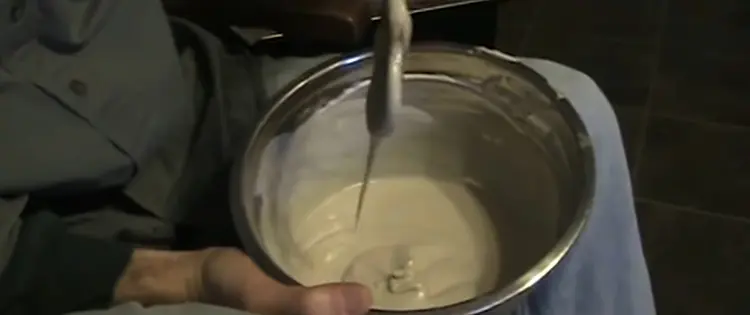













You can’t make any soap without using lye, and glycerin soap still contains lye. The saponification process that creates soap is the fat combined with the lye.